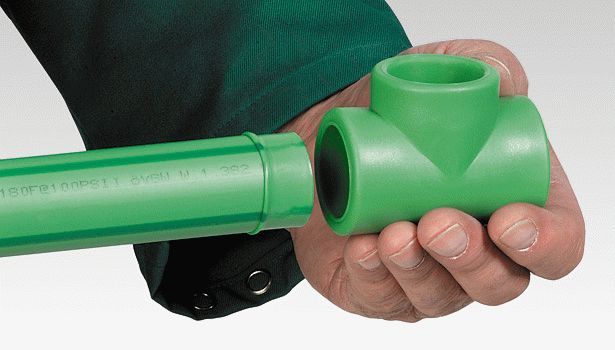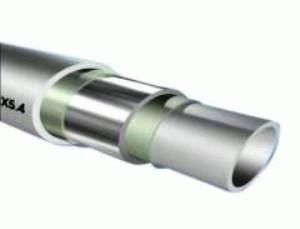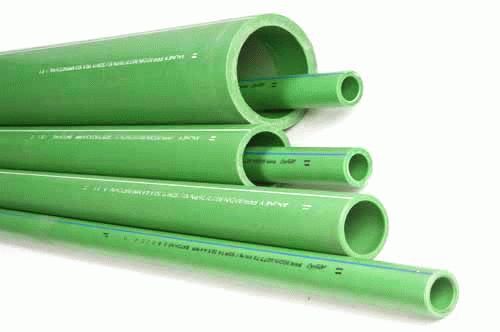Dimensions of polypropylene pipes for heating - what determines the right choice
To date, the most common type of material for the production of pipes used in the creation of heating systems is polypropylene. The demand for this product is due to a wide range, low cost, easy installation, high thermal conductivity, which allows you to keep warm for a long time. However, the correct choice of elements of the heating system can be complicated by the huge number of their types, which differ in size, colors, the presence of fittings, and various technical parameters. In order not to get confused in the offered assortment and make the right choice, it is important to know what types and sizes for heating are optimal. Only correct calculations will make the entire system efficient, reliable and durable.
Preference is given to a certain type of elements of the heating system, based on the size and allowable temperature and pressure values. It is necessary to be able to distinguish between the functions and possibilities of using pipes made of polypropylene, designed for hot or cold water. The most simple are those marked with the marking PN-10. They are operated in systems with pressure not exceeding 10 atm. It is possible to use them for arranging floor heating, but they are mainly used to supply cold water.
Marking PN-16 means good work at a pressure of 16 atm. and a water temperature of 80 degrees, PN-20 - withstand a pressure of 20 atm. and a temperature of 85 degrees. The highest strength is shown by polypropylene reinforced with the marking PN-25.
We note right away that when equipping a heating system, it is not recommended to use ordinary polypropylene unreinforced pipes. Having a large coefficient of expansion, they are able to significantly change in size if subjected to high temperatures. Therefore, when equipping a heating system, the choice should be given to reinforced polypropylene. Of course, today they are the most expensive of all the listed types on the market, but over time, their cost fully pays off due to the durability of heating systems and long-term operation without repair.

When installing these pipes, fewer loops are required to compensate. Due to this, the number of welds is reduced, as a result, the strength of the systems as a whole is increased. This material has significant advantages, the main ones being the following characteristics:
- increased strength;
- low coefficient of thermal expansion;
- ease of installation;
- long period of work.
As a result of the use of reinforced polypropylene pipes in heating systems, it not only significantly increases the service life of these systems, but also increases their efficiency.
At the moment, strength is being strengthened using several methods. Reinforcement with a solid sheet of aluminum provides for its application to the outer side of the pipe. When the pipes are connected, this aluminum layer is cut off at a distance of about one millimeter. Reinforcement with perforated aluminum is carried out similarly to the reinforcement method described above. It is also possible to reinforce the pipe wall with an aluminum sheet not completely, but closer to its inner part, or in the middle. The advantage of these pipes is that they do not need to be stripped before welding.

Also, the strength of the pipe is reinforced with fiberglass in the middle part of the pipe, while the inner and outer parts are made of polypropylene. The method of reinforcing with a composite consists in using a mixture of fiberglass with polypropylene. As in the previous case, the outer and inner parts are made of polypropylene. In the middle, between them, there is a layer of said mixture.
The fifth reinforcement method is the most optimal, since such pipes are the least prone to linear expansion.
Pipe size selection
When determining the required dimensions of polypropylene, one must take into account the thickness of their walls and diameter. The size of polypropylene ranges from 0.19-1.84 cm. It is advisable to give preference to pipes with thicker walls when choosing.
Diameter is one of the main characteristics of all pipes without exception, on which the hydrodynamics of the heating system as a whole depends. The internal size of a polypropylene pipe is necessary for calculating the allowable volume of water passed per unit of time. External - allows you to determine the size of the niche that the laying will occupy, and correctly select the fittings necessary to connect the elements. To date, polypropylene pipes are produced, which have a fairly wide range of diameters, which are conventionally divided into three categories:
- small - from 5 to 75 millimeters;
- medium - from 80 to 315 millimeters;
- large - from 400 and more.

Small-diameter pipes are used in the installation of heating systems, in drain equipment, for water supply in the private sector and apartments. The most common in high-rise buildings is currently an internal diameter of 32 mm. The average diameter is used for water supply in houses, for sewage. For the arrangement of ventilation systems in the role of an air duct and when supplying large volumes of cold water, pipes of large diameters are used.
The inner diameter of polypropylene pipes used with the heating system depends on the pressure and volume of water in it. Most often, diameter values are in the range of 0.8-10.0 cm. For private sector houses, diameter values in the range of 1.6-4.0 cm are very often used. They do not create installation difficulties, allowing piping, hidden in the wall, and also withstand pressure in the heating system. It is from maintaining a specific level of pressure that it depends on how efficiently the system will work.
Some time ago, when marking, the sizes of polypropylene pipes in inches were used. Now, millimeters are increasingly used as a unit of measurement. If necessary, you can use special tables to convert values.
Types of fittings for polypropylene pipes
Polypropylene pipes are produced with a length of about 4 meters. To connect the pipes, fittings for polypropylene pipes are used, which are an indispensable element of the heating system.
Today, manufacturers offer a wide range of types of these parts, depending on their purpose. The simplest of the fittings are couplings designed to hold two pipes together. They are a barrel, in which the inner diameter coincides with the outer diameter of the pipe.
If necessary, connect pipes of different diameters using an adapter. Similar to couplings, they are made in the form of a barrel, but with different internal diameters on opposite sides. Polypropylene adapters are also produced, used for threaded connections, having threads inside and outside.
If necessary, joining at an angle, corners are used. It is not recommended to save on these details and bend a polypropylene pipe using heating, since at the place of bending the wall on the outside becomes thinner, and the throughput of the pipe also decreases.
The bending angle of the produced corners is 45 and 90 degrees. Some types of corners can be threaded on one side.
If you need to connect three or four pipes at once, crosses and tees will come in handy. These parts are produced with different diameters, threads, fittings for other pipes.
If it is necessary to circle the pipe around some kind of obstacle, specially molded bends called bends are used.
The sizes of fittings for polypropylene pipes are selected depending on their diameter and the required parameters. Also, when choosing fittings, it must be remembered that fittings that are gray and white are intended for heating system equipment.
A wide range of offered fittings makes it possible to easily carry out all kinds of configurations from polypropylene elements. Therefore, knowing the exact dimensions of polypropylene pipes in millimeters, it will not be difficult to assemble a heating system from polypropylene components. This work can be done independently. To do this, you will need tools such as a tape measure, special cutting scissors, a special welding machine and a set of necessary fittings.









